butane-1,4-diaminium dichloride
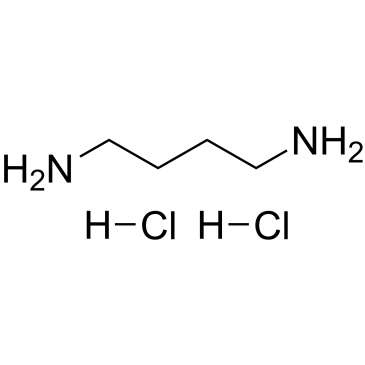
butane-1,4-diaminium dichloride structure
|
Common Name | butane-1,4-diaminium dichloride | ||
|---|---|---|---|---|
| CAS Number | 333-93-7 | Molecular Weight | 161.073 | |
| Density | 1.472g/cm3 | Boiling Point | 159ºC at 760 mmHg | |
| Molecular Formula | C4H14Cl2N2 | Melting Point | 280 °C (dec.)(lit.) | |
| MSDS | Chinese USA | Flash Point | 51.7ºC | |
| Symbol |

GHS07 |
Signal Word | Warning | |
Use of butane-1,4-diaminium dichloride1,4-Diaminobutane dihydrochloride is an endogenous metabolite, acts as an indicator of pollution-induced stress in higher plants: barley and rape stressed with Cr(III) or Cr(VI) [1]. 1,4-Diaminobutane dihydrochloride is an important source of GABA[2]. |
| Name | 1,4-Diaminobutane dihydrochloride |
|---|---|
| Synonym | More Synonyms |
| Description | 1,4-Diaminobutane dihydrochloride is an endogenous metabolite, acts as an indicator of pollution-induced stress in higher plants: barley and rape stressed with Cr(III) or Cr(VI) [1]. 1,4-Diaminobutane dihydrochloride is an important source of GABA[2]. |
|---|---|
| Related Catalog | |
| Target |
Human Endogenous Metabolite[1] |
| In Vitro | 1,4-Diaminobutane is an important source of GABA in the postnatal rat subventricular zone. GABA synthesis from an alternative pathway uses 1,4-Butanediamine as a precursor[2]. |
| References |
| Density | 1.472g/cm3 |
|---|---|
| Boiling Point | 159ºC at 760 mmHg |
| Melting Point | 280 °C (dec.)(lit.) |
| Molecular Formula | C4H14Cl2N2 |
| Molecular Weight | 161.073 |
| Flash Point | 51.7ºC |
| Exact Mass | 160.053406 |
| PSA | 52.04000 |
| LogP | 2.68860 |
| Storage condition | 2-8°C |
| Stability | Stable, but hygroscopic. Substances to be avoided: strong oxidizing agents. Combustible. |
| Water Solubility | H2O: 100 mg/mL |
CHEMICAL IDENTIFICATION
HEALTH HAZARD DATAACUTE TOXICITY DATA
MUTATION DATA
|
| Symbol |

GHS07 |
|---|---|
| Signal Word | Warning |
| Hazard Statements | H315-H319-H335 |
| Precautionary Statements | P280-P305 + P351 + P338-P337 + P313 |
| Personal Protective Equipment | dust mask type N95 (US);Eyeshields;Gloves |
| Hazard Codes | Xi:Irritant; |
| Risk Phrases | R36/37/38 |
| Safety Phrases | S26-S36-S37/39 |
| RIDADR | NONH for all modes of transport |
| WGK Germany | 3 |
| RTECS | EJ7280000 |
| HS Code | 2921290000 |
|
~88% 
butane-1,4-diam... CAS#:333-93-7 |
| Literature: Khoukhi, Mostafa; Vaultier, Michel; Benalil, Aziza; Carboni, Bertrand Synthesis, 1996 , # 4 p. 483 - 487 |
|
~% 
butane-1,4-diam... CAS#:333-93-7 |
| Literature: Tetrahedron Letters, , vol. 39, # 27 p. 4765 - 4768 |
|
~% 
butane-1,4-diam... CAS#:333-93-7 |
| Literature: Canadian Journal of Chemistry, , vol. 60, p. 2810 - 2820 |
|
~% 
butane-1,4-diam... CAS#:333-93-7 |
| Literature: Helvetica Chimica Acta, , vol. 75, # 1 p. 62 - 68 |
|
~% 
butane-1,4-diam... CAS#:333-93-7 |
| Literature: Journal of Carbohydrate Chemistry, , vol. 28, # 6 p. 348 - 368 |
| Precursor 5 | |
|---|---|
| DownStream 10 | |
| HS Code | 2921290000 |
|---|---|
| Summary | 2921290000 other acyclic polyamines and their derivatives; salts thereof。Supervision conditions:None。VAT:17.0%。Tax rebate rate:9.0%。MFN tariff:6.5%。General tariff:30.0% |
|
pH-triggered release of manganese from MnAu nanoparticles that enables cellular neuronal differentiation without cellular toxicity.
Biomaterials 55 , 33-43, (2015) At high concentrations, manganese (Mn) promotes cellular neurodevelopment but causes toxicity. Here, we report that Mn ion at high concentrations can be delivered to pheochromocytoma 12 (PC12) cells u... |
|
|
Tritiation and characterization of several polyamine natural products.
Appl. Radiat. Isot. 98 , 71-3, (2015) Methods are presented to tritiate the polyamines putrescine and spermine. Copyright © 2015 Elsevier Ltd. All rights reserved. |
|
|
Effect of Novel Starter Culture on Reduction of Biogenic Amines, Quality Improvement, and Sensory Properties of Doenjang, a Traditional Korean Soybean Fermented Sauce Variety.
J. Food Sci. 80 , M1794-803, (2015) To select appropriate microorganisms as starter cultures for the reliable and reproducible fermentation of soybean fermented products of Korean Doenjang, various ratios of fungi (Aspergillus oryzae J,... |
| 1,4-DIAMINOBUTANE 2HCL |
| 1,4-BUTANEDIAMMONIUM DICHLORIDE |
| Putrescin dihydrochloride |
| TETRAMETHYLENEDIAMINE 2HCL |
| EINECS 206-375-9 |
| butane-1,4-diamine dihydrochloride |
| PUTRESCINE HYDROCHLORIDE |
| Putrescine 2HCl |
| 1,4-Butanediamine, hydrochloride (1:2) |
| DIAMINOBUTANE DIHYDROCHLORIDE |
| 1,4-DiaMinobutane Dihydrochloride |
| 1,4-Butanediamine dihydrochloride |
| 1,4-DIAMINOBUTANE HYDROCHLORIDE |
| PUT dihydrochloride |
| MFCD00012526 |
| Putrescine Dihydrochloride |
| butane-1,4-diaminium dichloride |
| Tetramethylenediamine Dihydrochloride |







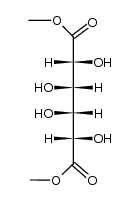
 CAS#:505-19-1
CAS#:505-19-1 CAS#:5724-81-2
CAS#:5724-81-2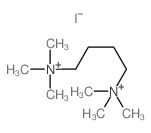 CAS#:23045-52-5
CAS#:23045-52-5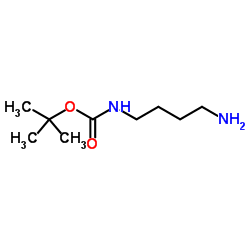 CAS#:68076-36-8
CAS#:68076-36-8 CAS#:621-84-1
CAS#:621-84-1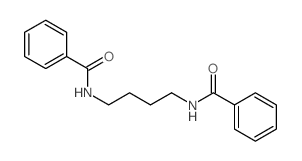 CAS#:31991-78-3
CAS#:31991-78-3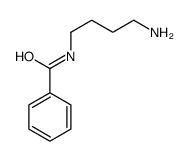 CAS#:5692-23-9
CAS#:5692-23-9![2-[4-(1,3-dioxoisoindol-2-yl)butyl]isoindole-1,3-dione structure](https://image.chemsrc.com/caspic/078/3623-90-3.png) CAS#:3623-90-3
CAS#:3623-90-3![2-[4-(carboxymethyl-nitroso-amino)butyl-nitroso-amino]acetic acid structure](https://image.chemsrc.com/caspic/328/7144-71-0.png) CAS#:7144-71-0
CAS#:7144-71-0 CAS#:6935-80-4
CAS#:6935-80-4
